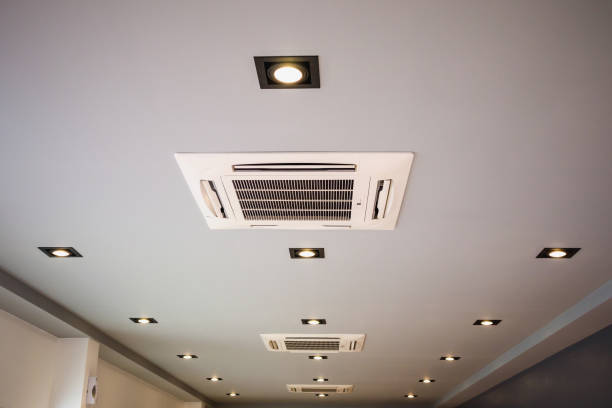Air conditioners have become indispensable in our quest for comfort, especially in regions where temperatures soar. However, like any complex machinery, air conditioners are susceptible to issues, and one common problem is broken connections in electrical cables. These issues can disrupt the smooth functioning of your AC unit, leading to discomfort and potential damage. In this article, we’ll explore the causes, signs, and solutions for broken connections in air conditioner electrical cables, empowering you to troubleshoot and address these issues effectively.
Understanding the Basics
The electrical cables in an air conditioner play a crucial role in transmitting power and signals between various components. A break in these connections can impede the flow of electricity, affecting the unit’s performance. Recognizing the signs and promptly addressing broken connections is essential to maintain optimal functionality.
Causes of Broken Connections
– Wear and Tear: Over time, the insulation around electrical cables can degrade due to exposure to varying temperatures, humidity, and other environmental factors. This wear and tear can lead to the development of cracks or breaks in the cables.
– Poor Installation: Incorrect or sloppy installation of the air conditioning unit can result in stress on the electrical cables. Excessive bending, stretching, or pinching during installation may weaken the cables, making them susceptible to breaks.
– Rodent or Pest Damage: Small animals seeking shelter in and around the air conditioner unit may gnaw on the electrical cables. This can lead to visible damage or create hidden weaknesses that manifest later as broken connections.
– Corrosion: In humid or coastal areas, corrosion can affect the metal components of electrical cables. Corroded cables are more prone to breakage and can compromise the unit’s overall electrical system.
Signs of Broken Connections
– Inconsistent Cooling: One of the primary signs of broken connections is inconsistent cooling. If your air conditioner struggles to maintain a consistent temperature, it may be indicative of disrupted electrical flow.
– Frequent Tripping of Circuit Breaker: Broken connections can lead to increased electrical resistance, causing the circuit breaker to trip frequently. If you notice this happening, it’s a clear signal to investigate potential cable issues.
– Unusual Sounds or Smells: A broken connection might produce audible or olfactory indicators. Strange sounds, such as buzzing or popping noises, could suggest electrical issues. Additionally, the smell of burning plastic could be a sign of overheating due to faulty connections.
– Visible Wear and Tear: Regular inspections of your air conditioner’s wiring can reveal visible signs of wear and tear. Look for frayed or damaged insulation, exposed wires, or any signs of pest damage.
Diagnostic Steps
– Visual Inspection: Conduct a thorough visual inspection of the electrical cables. Look for any visible damage, exposed wires, or signs of wear. Pay close attention to areas where cables may be bent, twisted, or subject to external stress.
– Use of Multimeter: A multimeter can help diagnose electrical issues. Check for continuity in the cables by using the multimeter to measure resistance. An open circuit or high resistance reading could indicate a broken connection.
– Professional Inspection: If you’re unsure about conducting the diagnostic steps yourself, it’s advisable to seek professional assistance. Certified technicians have the expertise and tools to conduct a comprehensive inspection and address any issues effectively.
Addressing Broken Connections
– Repair or Replace Damaged Cables: In cases where the damage is minimal, cables may be repaired by splicing or using heat shrink tubing. However, extensive damage or multiple breaks may necessitate cable replacement.
– Professional Repair Services: Engaging the services of a professional technician is crucial for intricate electrical repairs. Technicians can accurately identify the root cause of the issue, ensuring a comprehensive and lasting solution.
– Preventive Measures: Implementing preventive measures can help reduce the risk of broken connections. Regular maintenance, pest control measures, and protecting cables from environmental elements can contribute to the longevity of the air conditioner’s electrical system.
DIY Tips for Prevention
– Regular Cleaning: Keep the area around the air conditioner clean and free from debris. This reduces the likelihood of pests taking refuge near the unit and causing damage to electrical components.
– Protective Measures: Install protective covers or conduits to shield electrical cables from exposure to the elements, especially in areas prone to corrosion or extreme weather conditions.
– Professional Maintenance: Schedule regular professional maintenance for your air conditioning unit. Certified technicians can identify potential issues before they escalate, providing timely repairs and ensuring the overall health of your system.
– Invest in Quality Insulation: Quality insulation for electrical cables is a preventive measure that can mitigate the impact of environmental factors, reducing the risk of wear and tear.
Addressing broken connections in air conditioner electrical cables requires a combination of vigilance, diagnostic skills, and, when necessary, professional intervention. By understanding the causes, recognizing the signs, and implementing preventive measures, you can ensure the longevity and efficient operation of your air conditioning unit. Regular maintenance and prompt attention to cable issues contribute to a comfortable indoor environment and safeguard your investment in cooling technology.
Don’t delay your air conditioner repair. Do not forget that repairing is much easier and cheaper immediately after a breakdown occurs. If your air conditioner is working, but making strange noises or not cooling the room enough, it means it’s time to contact the technicians.
Don’t wait until the air conditioner is completely out of order. In the case of untimely repairs, there is a very high possibility that a long complex repair will be required. Even a few days without air conditioning in the summer heat in San Diego County, CA will bring great discomfort to the whole family. But by calling the masters from SDAC Heating & Air Conditioning you can avoid this problem.
Contact us
